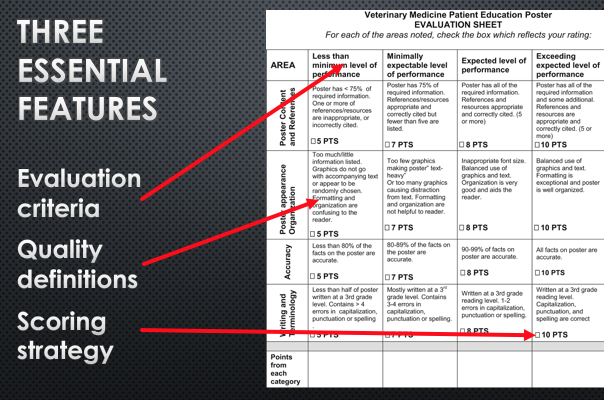Definition
Rubrics are scoring guides or specific pre-established performance criteria in which each level of performance is described to contrast it with performance at other levels.
Uses
Rubrics:
- Provide feedback and grade student work.
- Help students understand the targets for their learning.
- Help students learn standards of quality for a particular assignment.
- Help students make dependable judgments about their own work that can inform improvement.
Types
There are two types of rubrics – analytic and holistic. An analytic rubric is used to assess more than one content area at different levels of performance. A holistic rubric targets a single area and is used to assess a whole work or product considering multiple factors. DePaul's Teaching Commons explaines these, as well as a subset of analytic rubrics called "developmental rubrics."
And this document provides even more detail on the subsets and guides construction of the two types.
![]() Utah Valley University types_of_rubrics.pdf
Utah Valley University types_of_rubrics.pdf
Features
Rubrics contain three essential features: evaluation criteria, quality definitions, and a scoring strategy. They generally exist as tables comprising a description of the task being evaluated, row headings outlining the criteria being evaluated, column headings identifying the different levels of performance, and a description of the level of performance in the boxes of the table.
Rubric from Development of an elective course in veterinary medicine with focus in communication.
More:

